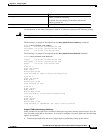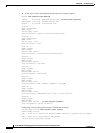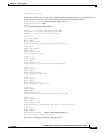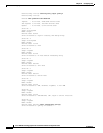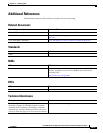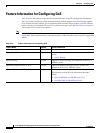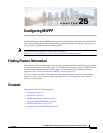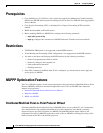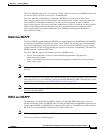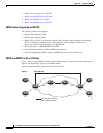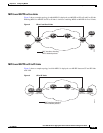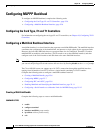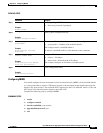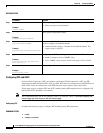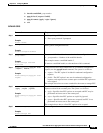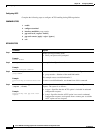
25-3
Cisco ASR 901 Series Aggregation Services Router Software Configuration Guide
OL-23826-09
Chapter 25 Configuring MLPPP
MLPPP Optimization Features
The Cisco ASR 901 supports one serial links per T1/E1 connection and up to 16 MLPPP bundles. You
can use the fixed T1/E1 ports to create up to 16 MLPPP links.
The Cisco ASR 901 implementation of multilink (dMLPPP) uses interleaving to allow short,
delay-sensitive packets to be transmitted within a predictable amount of time. Interleaving allows the
Cisco ASR 901 to interrupt the transmission of delay-insensitive packets in order to transmit
delay-sensitive packets. You can also adjust the responsiveness of the Cisco ASR 901 to delay-sensitive
traffic by adjusting the maximum fragment size; this value determines the maximum delay that a
delay-sensitive packet can encounter while the Cisco ASR 901 transmits queued fragments of
delay-insensitive traffic.
Multiclass MLPPP
The Cisco ASR 901 implementation of dMLPPP also supports Multiclass MLPPP. Multiclass MLPPP is
an extension to MLPPP functionality that allows you to divide traffic passing over a multilink bundle
into several independently sequenced streams or classes. Each multiclass MLPPP class has a unique
sequence number, and the receiving network peer processes each stream independently. The multiclass
MLPPP standard is defined in RFC 2686.
The Cisco ASR 901 supports the following multiclass MLPPP classes:
• Class 0- Data traffic that is subject to normal MLPPP fragmentation. Appropriate for
non-delay-sensitive traffic.
• Class 1- Data traffic that can be interleaved but not fragmented. Appropriate for delay-sensitive
traffic such as voice.
Note By default, Multiclass MLPPP is enabled with two classes. Maximum number of classes supported is
also two.
Note The Cisco ASR 901 does not support some PPP and MLPPP options when the bundle is offloaded to the
network processor; you can retain these options by disabling MLPPP and IPHC offloading for a given
bundle. For more information, see “MLPPP Offload” section on page 25-13.
Note The output for the show ppp multilink command for an offloaded MLPPP bundle differs from the output
for a non-offloaded bundle.
MPLS over MLPPP
The Multiprotocol Label Switching (MPLS) support over Multilink PPP feature allows you to use
labeled switch paths (LSPs) over MLPPP links. In a network with Ethernet and MLPPP connections, this
feature supports MPLS over MLPPP links in the edge (PE-to-CE) or in the MPLS core (PE-to-PE and
PE-to-P) or at the end of MPLS labeled path (CE-to-PE) as PE router.
Note QoS is not supported for MPLS over MLPPP.
This section contains the following topics:



